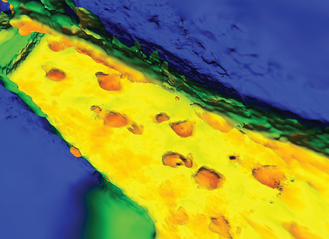112 Million-Year-Old Dinosaur Chase Reconstructed In 3D, Image Has Many ‘Depths And Impressions’ [PHOTO]
A dinosaur chase that took place 112 million years ago has been reconstructed using 3D imagery.
It seems two dinosaurs participated in the chase that took place in what is now Glen Rose, Texas. According to preserved tracks excavated more than 70 years ago, they were a long-necked sauropod and a meat-eating theropod. The track was divided into blocks and distributed to different locations for study. Researchers recreated the scene using photos of the site before it was dismantled.
The findings, detailed in the journal PLOS ONE on Wednesday, describe how the chase involved a theropod running after a sauropod.

"It's great to get so many stride lengths, so many depths and impressions," said Peter Falkingham, a research fellow at Royal Veterinary College in London and study researcher. "There's all this data you can get from an animal moving over quite a long distance."
The site belongs to a larger archaeological site called the Paluxy River Trackway. The tracks were excavated in 1940 and divided into three. While two pieces were given to museums, the third was lost. The fossil collector at the time, Roland T. Bird, took numerous photographs of the tracks intact. Now, 74 years later, scientists used photogrammetry to determine the angle when the photos were taken. This allowed the research team to create a 3D model of the tracks.
"We now have the whole trackway in context in a single piece," Falkingham told the BBC.
Some of the photos were less detailed, resulting in a more fuzzy 3D image towards the north end. The reconstruction also debunked a mystery surrounding the trajectory of the chase. At the time Bird excavated the tracks he drew two maps: one showed the dinosaurs running in a straight line, the other with a slight curve to the left. The new 3D image shows the latter was more accurate.
The findings also have large implications for other discoveries made years ago that remain lost.
"Here we're showing that you can do this to lost or damaged specimens or even entire sites if you have photographs taken at the time,” Falkingham said. "And that means we can reconstruct digitally, and 3D print, objects that no longer exist."
© Copyright IBTimes 2024. All rights reserved.






















